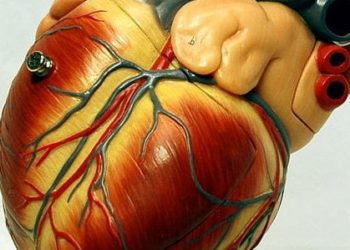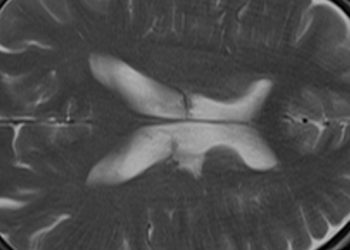The EXTEND trial: neurological deficits decreased with thrombolysis up to 9 hours after stroke onset
1. Patients presenting between 4.5 and 9 hours after stroke onset with viable brain tissue who received thrombolytic therapy had better neurological outcomes compared to those receiving placebo.
2. Symptomatic intracranial hemorrhage occurred in a higher number of patients in the thrombolysis group compared to placebo group.
Evidence Rating Level: 1 (Excellent)
Study Rundown: Guidelines for thrombolytic therapy after ischemic stroke recommend thrombolytic use within 4.5 hours of stroke onset. Imaging with CT and MRI methods are now able to determine whether brain tissue is viable after stroke, giving rise to the possibility of determining if patients should receive thrombolytic therapy based on tissue viability in addition to time since stroke. The EXTEND trial is a phase 3 randomized controlled trial evaluating functional outcomes of patients receiving alteplase or placebo between 4.5 and 9 hours from stroke onset. At 90 days since treatment, patients who received alteplase had better neurological outcomes compared to those treated with placebo. A higher number of patients receiving alteplase experienced symptomatic intracranial hemorrhage than in the placebo group.
This study provides strong evidence for considering information about tissue viability from imaging in deciding whether to administer thrombolytic therapy for patients with delayed hospital presentation after stroke. The study’s strengths are its randomized controlled design and use of either CT or MRI for tissue viability determination. The study was limited by the smaller than planned number of patients recruited for the trial.
Click to read the study in NEJM
Click to read an accompanying editorial in NEJM
In-Depth [randomized controlled trial]: This phase 3, multicenter, placebo-controlled, randomized controlled trial enrolled patients between 2010 and 2018. Eligible patients presented with stroke symptoms between 4.5 and 9 hours after onset, had good functional status prior to their stroke occurrence, had a stroke severity score of between 4 and 26 on the National Institutes of Health Stroke Scale (NIHSS), and had salvageable brain tissue as determined via CT or MRI. Viable brain tissue had greater than 30% of normal blood flow in the affected region. Patients were randomized to receive either alteplase (n=113) or placebo (n=112). The primary outcome of a score of 0 or 1 on the modified Rankin scale for neurological deficit at 90 days post-intervention was achieved in 35.4% of the alteplase group and 29.5% of the placebo group (adjusted risk ratio, 1.44; 95% confidence interval [CI], 1.01 to 2.06; P = 0.04). A modified Rankin score or 0 to 2, indicating functional independence, occurred in 49.6% and 42.9% of the alteplase and placebo group patients, respectively (adjusted risk ratio, 1.36; 95% CI, 1.06 to 1.76). At 24 hours, reperfusion returned to 90% of normal in 50.0% and 28.4% of patients in the alteplase and placebo groups, respectively (adjusted risk ratio, 1.73; 95% CI, 1.22 to 2.46). There was no significant difference in deaths at 90 days between groups. Symptomatic intracranial hemorrhage occurred in 6.2% and 0.9% of the patients in the alteplase and placebo groups, respectively (adjusted risk ratio, 7.22; 95% CI, 0.97 to 53.54; P=0.053).
Image: PD
©2019 2 Minute Medicine, Inc. All rights reserved. No works may be reproduced without expressed written consent from 2 Minute Medicine, Inc. Inquire about licensing here. No article should be construed as medical advice and is not intended as such by the authors or by 2 Minute Medicine, Inc







